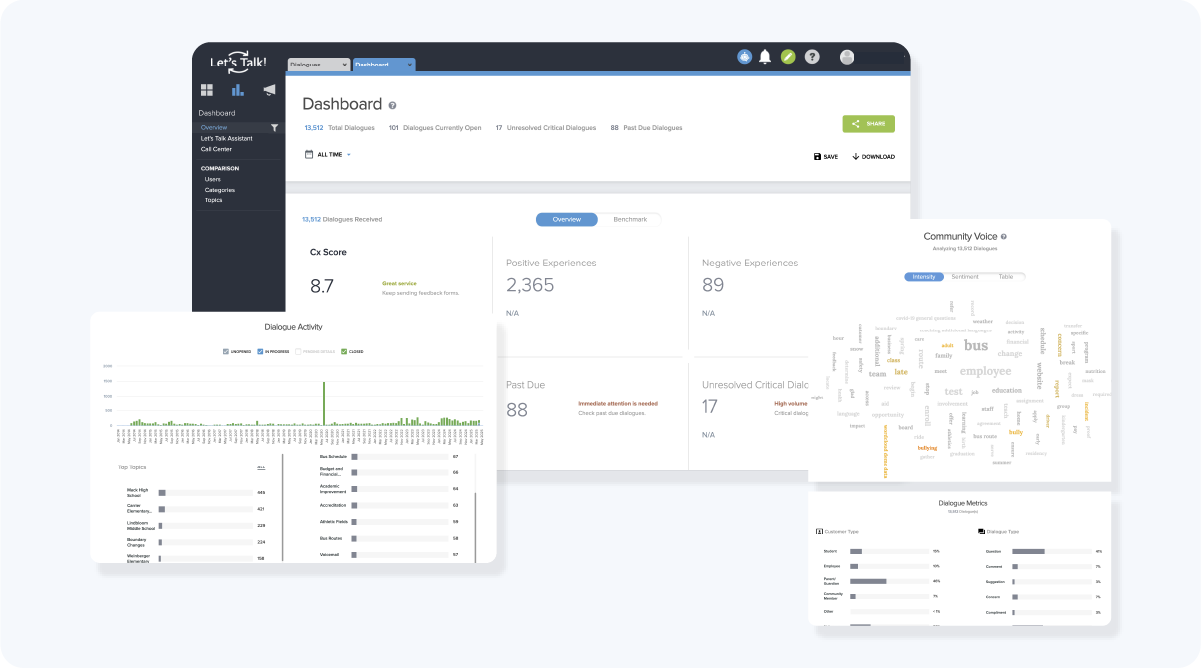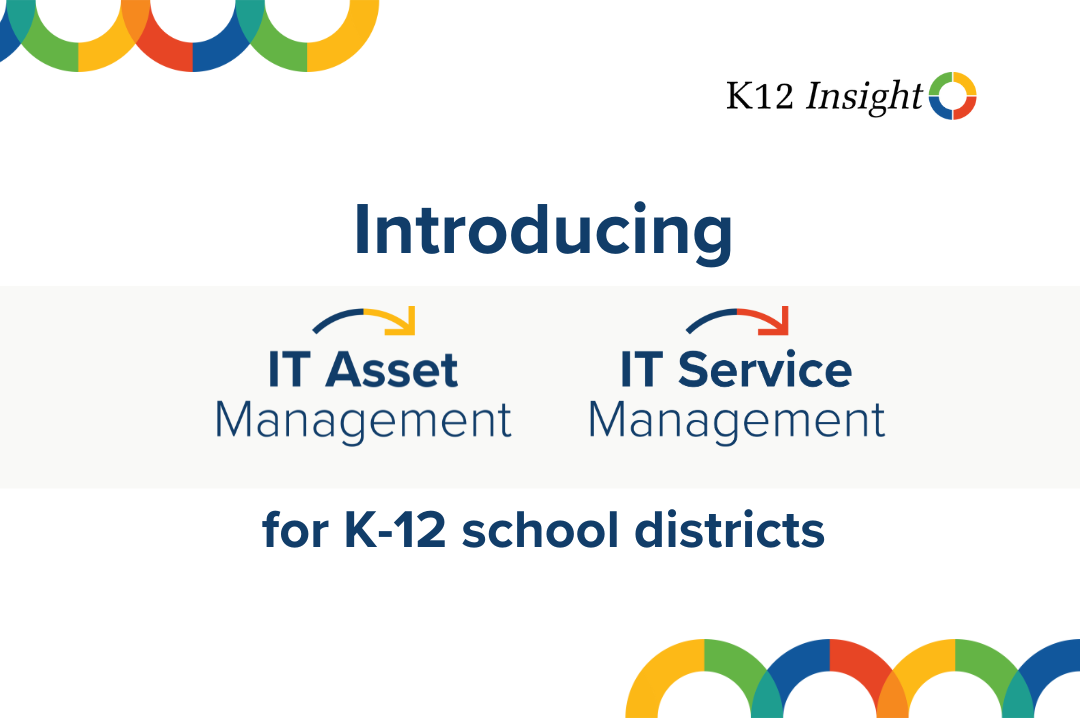
How AI Is Transforming IT Support in K-12: What District Leaders Should Know
Across the country, school district IT teams are managing everything from troubleshooting tech issues to tracking thousands of devices and supporting digital learning environments. The sheer scope of an IT department’s responsibility makes artificial intelligence (AI) an attractive option for scaling a team’s capacity to meet these growing demands.
Used wisely, AI can help IT leaders resolve tickets faster, reduce manual repetitive tasks, and support staff and families more efficiently. But new technology also brings questions and many districts are approaching AI with a healthy mix of optimism and caution.
Let’s take a closer look at where AI is already making a meaningful impact in school IT operations and why many district technology leaders are paying attention.
Where AI Is Making a Difference
For most IT leaders, the appeal of AI is pretty straightforward: It helps teams do more with the same (or fewer) resources. Here are a few ways districts are seeing early wins:
- Faster IT Support: AI can automatically route support tickets, suggest responses for recurring issues, and prioritize requests by urgency. That means less time spent triaging and more time solving real problems.
- Smarter Asset Management: Manage every asset from procurement to decommissioning with AI-powered tools that streamline support, track performance, and reduce costs — so IT teams can deliver faster, smarter service with fewer resources.
- Quicker Answers: 24/7 AI-powered chatbots can provide answers to common questions in real time, in multiple languages, keeping routine inquiries out of the queue. By reducing call and email volume, staff has more time to focus on work that requires human intervention.
- Stronger Data for Decision-Making: The more AI is used to manage service interactions, the more insights it delivers. Over time, patterns emerge such as spikes in tech issues after device rollouts or increased demand for support in different languages. These trends can be used to inform continuous performance improvement efforts.
Research from the Service Desk Institute reports that organizations using AI in their help desk systems experience a 30–40% improvement in response and resolution times. That adds up to meaningful financial savings.
Overcoming the Objections to Introducing AI tools
Even with these benefits, some district leaders still have questions. AI isn’t a magic wand, and success depends on thoughtful planning, the right tools, and strong change management.
Here are a few concerns we’ve heard from K-12 tech teams and how they’ve overcome them.
Concern #1: We can’t justify the time, effort, and expense to implement another tool.
Response: The right AI-powered platform can deliver measurable ROI—and fast. By reducing average response times from 12 minutes to just 4, districts can save up to 8 minutes per customer interaction. Multiply that time savings by thousands of interactions per year and factor in the average hourly wage of staff, and the return becomes clear. The right platform will streamline workflows, eliminate redundancy, and help teams do more with fewer resources—ultimately lowering operational costs while improving service delivery.
Concern #2: Our teams aren’t ready, or are resistant to change.
Response: Resistance often comes from uncertainty or a lack of support. That’s why it’s critical to select tools designed with K-12 users in mind. Look for platforms that are intuitive, provide training, and offer strong customer support. Ongoing coaching and hands-on onboarding can help ensure that staff members understand not just how to use the system, but how it makes their day-to-day work easier and more efficient.
Concern #3: It won’t work with our existing systems or infrastructure.
Response: Modern platforms are built to integrate, not replace. Many offer flexible APIs, Single Sign-On (SSO), and pre-built connectors for popular student information systems (SIS), learning management systems (LMS), and IT tools. This interoperability allows districts to enhance, not disrupt, their current tech ecosystems, making implementation smoother and more cost-effective.
Concern #4: Will it benefit all our community members, or just some?
Response: A districtwide solution should be designed to serve everyone including students, families, staff, and community members. Features like multilingual support, mobile-friendly design, and inclusive accessibility standards help ensure that all users can engage with the platform. Centralizing service delivery also helps eliminate silos, ensuring that every request is directed to the right team, no matter where it comes from.
Concern #5: Does it align with our policies and is it safe and secure?
Response: Security and compliance are essential, especially when handling sensitive student and staff information. Leading platforms meet FERPA and other regulatory standards, with role-based access controls, audit trails, and customizable permissions. These features not only protect data but also ensure your district maintains full control over who can access what and when.
When implemented strategically, AI-powered service and asset management tools help school districts operate more efficiently, deliver faster support, and create more consistent, equitable experiences for every stakeholder. From procurement to decommissioning, and from frontline support to backend analytics, these platforms offer a scalable way to modernize district operations, without overloading your team.
Questions to Ask Before Getting Started
If your district is thinking about AI-powered tools, consider these guiding questions and what to look for in your answers:
- Where do our teams spend the most time? How much of this time is busy work vs. high-value work?
- How can automation speed up response times?
- How can automation reduce staff workloads?
- How does the product fit into current systems and workflows?
- How does a product integrate with existing systems?
- Will everyone (all staff and student families) benefit from the technology?
- What will it take to implement and sustain the new product?
One Approach in Action
Some districts are already putting AI to work in practical, measurable ways. Take Onflo (formerly Let’s Talk), for example, which includes an AI-powered chatbot that can be embedded directly on a district website. It helps staff respond to routine questions quickly, offers 24/7 multilingual support, and reduces the volume of calls and emails that bog down service teams.
A smart strategy for district implementation is to start small by introducing AI in one department where the benefits will be immediately visible. For instance, districts could begin with transportation, where common inquiries (like bus routes, delays, or stop locations) account for a large share of incoming questions. Once one team experiences the benefits, it becomes easier to expand the tool to other departments like technology, enrollment, or food services.
This phased approach not only builds confidence in the tool but also gives district leaders valuable insights and buy-in before scaling districtwide.
Onflo: the only AI-powered, all-in-one, district-wide customer service platform built for education.

Using AI to Modernize Key Service Processes in Schools
AI can modernize key service processes in schools, from IT to transportation to HR, and help deliver operational efficiency. As you plan for the future, stay focused on your district’s biggest needs and choose tools that are transparent, accessible, and purpose-built for education.
Whether you’re just starting to explore AI or already experimenting with automation, the goal is the same: deliver better, faster support for the students, staff, and families you serve without overwhelming your team in the process.
Want to explore how your district can leverage AI to deliver customer service excellence? Schedule a consultation with our team.
Subscribe to our Newsletter
Expert tips and customer service insights delivered right to your inbox.
Related Articles



